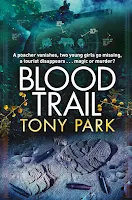* Copy courtesy of Bloomsbury Australia *
Intro
It's time for another instalment in my series of book reviews from the Object Lessons series by Bloomsbury Academic. This time, Neil Béchervaise takes a look at Hyphen by Pardis Mahdavi.Neil's Review
What a pleasure to meet an object that is, at once, informative, entertaining and insightful. Pardis Mahdavi’s Hyphen is a delightful relief from the ‘full-court press’ of the publish-or-perish academic approach of several other ‘Objects’ I have tried to read. Her personal narrative as an academic who strongly identifies with her students confirms both the power of the hyphen as a point of connection and as a reminder of the potential difference that the punctuation mark commands.Identifying Dionysus Thrax, the second century Greek student of Aristarchus, as the scholar who invented the hyphen and the apostrophe, Mahdavi provides an easy-to-understand outline of the value of his punctuation innovations for reducing the reader’s/speaker’s difficulties in separating and providing intended emphasis on words which were written without any spacing at all.
“…[clarifying] for the speaker [how] the words should be understood – and spoken – as a single entity.” Page 16By the time she introduces the 1440’s role of Gutenberg’s bible as probably the next-most significant development in clarifying our ability to read written text with the emphasis that the author intended, Mahdavi has already established her own identity as dependent on the role of the hyphen in twenty-first century America.
Weaving the backgrounds and college-formative experiences of several of her ‘hyphenated American’ students into her own Iranian-American-feminist-activist narrative, including her arrest and interrogation as an American spy when she speaks in Tehran, Mahdavi provides a chilling insight into the difference between multi-cultural inclusivity and multi-racial bigotry.
Drawing on the first generation Chinese-American, Mexican-American and African-American origins of three of her students at Arizona State University, Pardis Mahdavi foregrounds the issues that both she and they encounter in locating the fine line between being accepted as Americans and maintaining the integrity of their birthrights. Ania, identifying as Latin-American is called out for daring to represent her fellow Latinx students while being unable to speak her mother’s Mexican Spanish. Nigerian-American AdeChike’s ‘bending a knee’ while the national anthem is played before his football game leaves a football crowd with no memory of the final game score but an enduring memory of the un-American coloured player's action. Chinese-American Daniel adds outrage at their homosexuality when they seek to have their sperm preserved before undergoing sex-change therapy – and changing their pronominal identity to she. The ‘hyphenated Americans’ seek acceptance into what appears to be an unapologetically racist society, their skin colour no more an issue than their hyphenated identity.
Supporting her beguiling social narrative with the historical refusals of successive American Presidents and supportive power figures across the nation to accept any identification except ‘American’, Mahdavi identifies establishment efforts to remove the hyphen from the naming of the New-York Historical Society. She compounds her observation with infuriated reactions to the removal of the hyphen from over 1600 previously conjoined ‘words’ in the 2007 edition of the Shorter Oxford Dictionary. The response, she argues, denies recognition of the evolutionary role of the hyphen as a grammatical bridge – as exemplified in health care becoming health-care before morphing into healthcare.
While unapologetically admitting that this review contains ‘spoilers’, I have to assert that Hyphen has broken all my resistance to the Bloomsbury’s Object Lessons series. I can readily accept that hyphens and dashes are different -
“The dash divides. The hyphen connects. Brings together.” Page 129
So maybe there will come a ‘dash’ but that may be pushing my luck a step too far.
More importantly, more emotionally, I feel that I have a better understanding of how,
More importantly, more emotionally, I feel that I have a better understanding of how,
“Living in the gap – or embracing the hyphen, as I like to refer to it – is important because there is great strength in being able to bridge, connect and birth new things.” Page 142Through her own and her students’ lived experience as ‘hyphenated Americans’, Pardis Mahdavi’s has given a scope and a depth to both the grammatical and the lived meaning of the hyphen – not only for Americans but for everyone who sees themselves as a more complex being than the tick-a-box descriptions with which society too often labels and dismisses us.









































